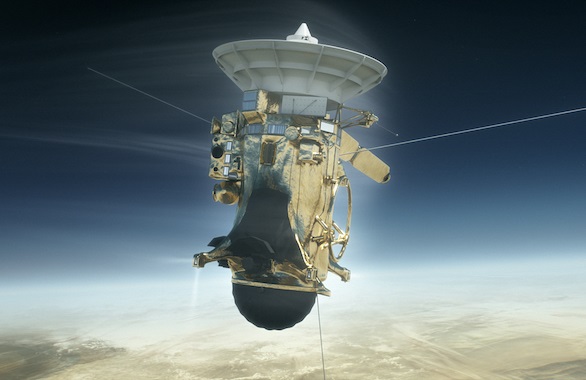Cassini’s Swan Song – Flagship NASA Mission Ends after 20 Years
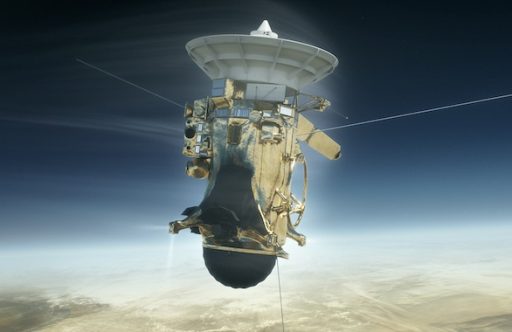
Cassini – NASA’s flagship planetary exploration mission for the last 20 years – found a fiery grave in Saturn’s dense atmosphere on Friday, ending a remarkable mission of discovery that will keep scientists busy for years to come to decipher the secrets Saturn and its enigmatic moons hold.
The last signal from the falling spacecraft was received on Earth at 11:55 UTC when Cassini’s thrusters could no longer cope with the forces induced by Saturn’s upper atmosphere, followed not two minutes later by the incineration of the 2.5-metric ton spacecraft after 294 orbits around the solar system’s second largest planet.
Seventeen countries were involved in designing NASA’s milestone mission to the ringed planet with the agency’s Jet Propulsion Laboratory at the forefront, in charge of assembly of the orbiter, while a European Team built the Huygens probe, destined for a landing on Saturn’s moon Titan.
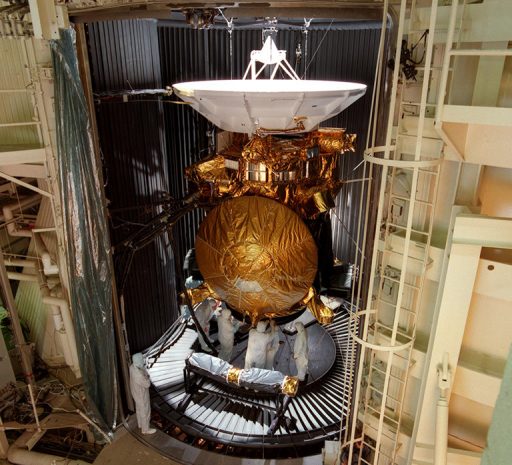
Named after the discoverer of Saturn’s rings, Cassini departed Earth on October 15, 1997 atop a Titan IV rocket that successfully dispatched the 6.8-meter tall spacecraft into solar orbit. To get to its faraway destination, Cassini was facing a journey of over six and a half years – passing by Venus in 1998, Earth in 1999 and Venus again the same year to “borrow” some of the planets’ momentum to slingshot out into the outer solar system.
In 2000, Cassini flew by the Gas Giant Jupiter, using its massive gravitational pull to accelerate further out to Saturn where the probe arrived on July 1st, 2004 – performing a do-or-die orbit insertion burn of 96 minutes, placing it in a highly elliptical orbit with another burn to adjust its trajectory into a 300,000 km by nine million Kilometer orbit.
Cassini was the first spacecraft to orbit Saturn, NASA’s Pioneer 11 and the two Voyager probes completed flybys of the planet in 1979 through 1981. Placing a craft into orbit around Saturn promised a much greater data set than the previous flyby missions, offering an opportunity of many close encounters with the planet itself as well as its moons over a mission that was initially expected to last three years, but ended up being extended by more than nine years thanks to stellar performance by the Plutonium-powered spacecraft.
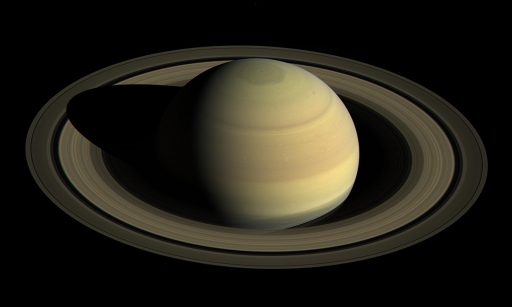 Completing nearly 300 laps around Saturn, Cassini watched seasons change, studied the planet’s atmospheric make up, kept tabs on an enigmatic storm on the planet’s north pole, watched icy jets emanating from Saturn’s moon Enceladus and examined Titan in unprecedented detail – putting into perspective the possibility of life in our solar system.
Completing nearly 300 laps around Saturn, Cassini watched seasons change, studied the planet’s atmospheric make up, kept tabs on an enigmatic storm on the planet’s north pole, watched icy jets emanating from Saturn’s moon Enceladus and examined Titan in unprecedented detail – putting into perspective the possibility of life in our solar system.
Specifically, Cassini set out to address seven objectives that were to determine the three-dimensional structure and dynamic behavior of the ring system, determine the composition and history of Saturn’s moons, measure the structure and dynamic behavior of Saturn’s magnetosphere, and study the dynamic behavior of Saturn’s atmosphere at cloud level. Concerning the moons, additional objectives included studying Titan’s clouds and hazes, and determining the nature and origin of dark material in Iapetus, Saturn’s third largest moon.
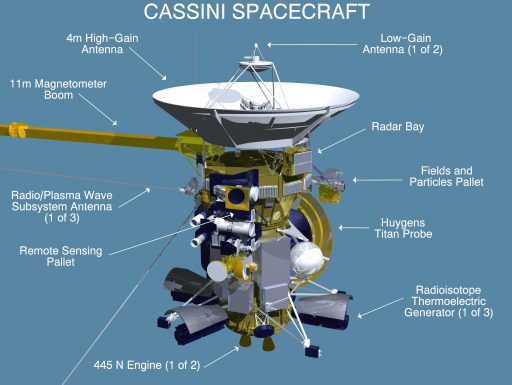
This was made possible by a spacecraft of 2,523-Kilograms (dry mass), standing 6.8 meters tall and measuring 4 meters in diameter; featuring 14 Kilometers of wires, holding 32.7 Kilograms of radioactive Plutonium as power source and hosting a dozen science instruments. Huygens – named after the discoverer of Titan – accounted for 349 Kilograms of the spacecraft’s mass and hosted six instrument packages to study the composition and dynamics in Titan’s atmosphere and sensors to determine the physical characteristics of the moon’s previously unknown surface.
Cassini’s instrument suite included a series of optical systems designed to collect imagery in multiple wavelength bands, obtain spectrometric data in visible and infrared wavelength and conduct spectrography in the UV range. The Fields, Particles and Waves Package hosted a plasma spectrometer, an ion and neutral mass spectrometer, a cosmic dust analyzer, a magnetometer & magnetospheric imager, and a radio and plasma sensing instrument. Additionally, Cassini hosted a radar to probe Titan’s hidden surface and the craft’s communications system doubled as radio science instrument for atmospheric studies and gravitational measurements.
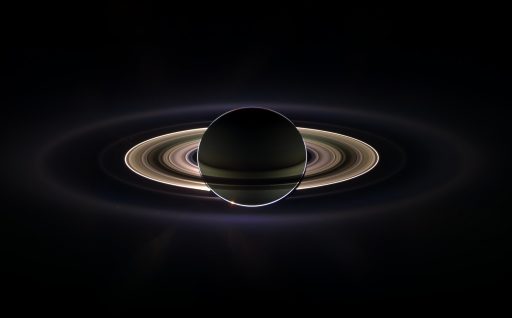
Cassini relied on a 490-Newton main engine to reach Saturn and hit the brakes for orbital insertion while smaller thrusters were used for extensive orbital maneuvering with some 360 burns performed during the mission to set up over 160 flybys of Saturn’s moons, also using their gravity to control its orbit in a very complex mission design circumnavigating the gaseous planet, avoiding the rings and threading the needle when flying closer than 50 Kilometers to the moons.
Over the course of its mission, Cassini burned 3.1 metric tons of propellants while electrical power was generated via three Radioisotope Thermoelectric Generators utilizing the heat released by the radioactive decay of Plutonium to generate power and heat the spacecraft as it traveled into the far reaches of the solar system with around 660 Watts of power available to the craft in the closing months of the mission.
Cassini’s ground-breaking science mission started well ahead of its arrival at Saturn, collecting data during the 2000 Jupiter flyby that showed new insight into the Gas Giant’s colorful cloud belts and revealed the origin of the planet’s ring system as ejecta from meteorite impacts with moons Metis and Adrastea.
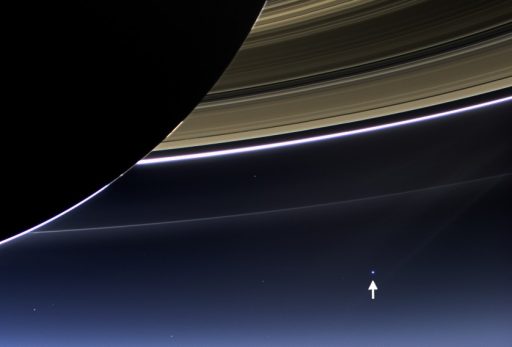
Venturing out toward Saturn, Cassini was used to put Einstein’s Theory of General Relativity to the test – measuring the shift in radio waves from the spacecraft when the line of sight between Earth and Cassini was close to the sun, thus revealing that a massive object like the sun causes space-time to curve, meaning radio waves had to cover a greater distance as they traveled along the curvature.
On approach to Saturn, Cassini spotted three previously unknown moons, made its only flyby of Phoebe that revealed large amounts of water ice under its surface, and measured Saturn’s rotation rate. Leading up to the July 2004 orbit insertion, Cassini braved a dangerous passage through a gap in the F and G rings – using its four-meter high-gain antenna as a shield from ring particles before re-orienting for its rocket-powered braking maneuver to enter orbit.
Just one day after its arrival, Cassini completed a flyby of Titan – the first of 127 – with its instruments peering through the moon’s clouds which showed a south polar surface standing out in brightness, indicating the presence of rivers and channels on Titan’s surface.
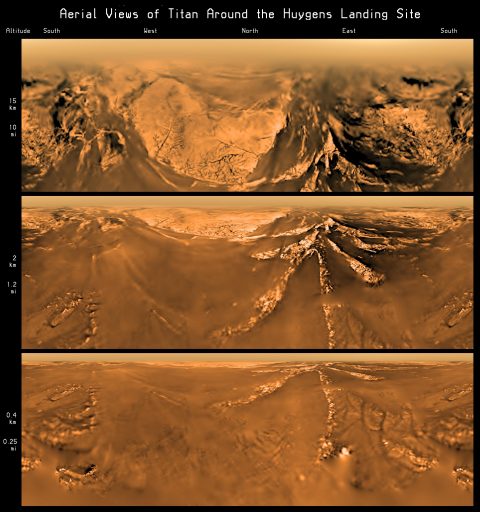
A much closer flyby enabled Cassini to collect radar data, showing a smooth surface and clearing the way for the Huygens landing.
The Huygens lander detached from Cassini on December 25, 2004 and continued on its own until hitting Titan’s atmosphere on January 14, 2005 for a two-hour parachute-assisted descent ahead of landing on Titan’s surface. On its way down, Huygens studied Titan’s atmospheric structure, wind profiles relative to altitude, atmospheric composition for gases and aerosols, and some surface parameters.
Huygens captured a total of 700 images during its lengthy descent, though only 350 reached Earth due to a software error preventing Cassini from recording one of two radio channels from the lander.
Nevertheless, the Huygens mission was classed a remarkable success and to this day remains the most distant landing ever accomplished from Earth. Huygens showed Titan’s surface to comprise clays and sands with a thin layer of methane haze lingering atop.
While the Huygens mission ended after less than an hour on the surface of Titan, Cassini continued to closely study the perplexing moon for many years, discovering permanent lakes of liquid hydrocarbons – methane, ethane and propane – in Titan’s polar regions, making the moon the only other place in the solar system where known, permanent liquid lakes exit. Cassini also detected methane rain and seasonal floods on Titan, making its final flyby on September 12, 2017 just days before the mission’s planned end.
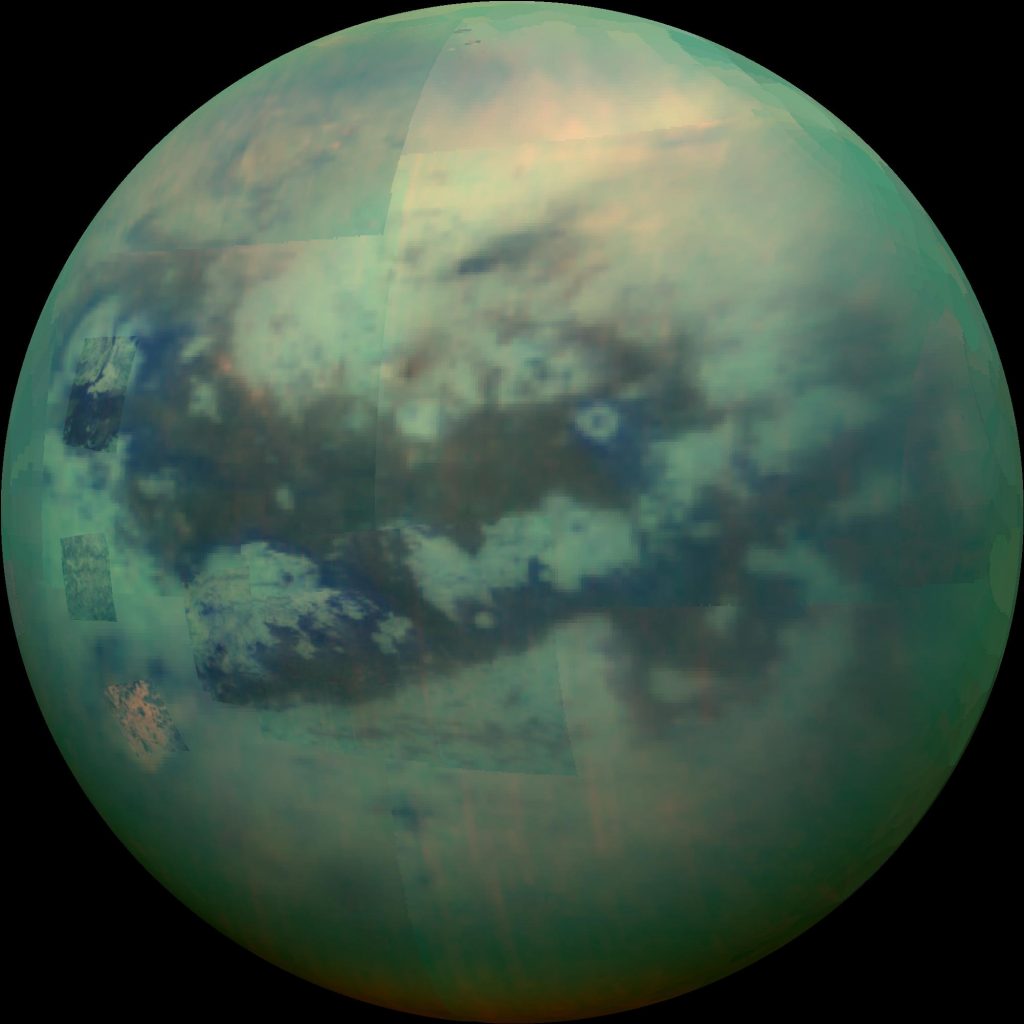
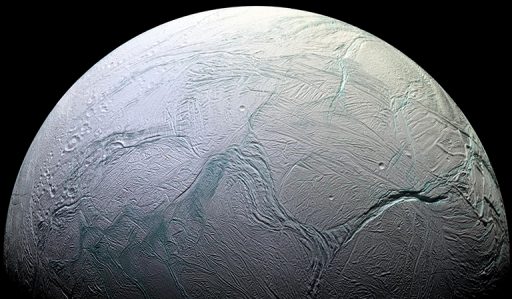
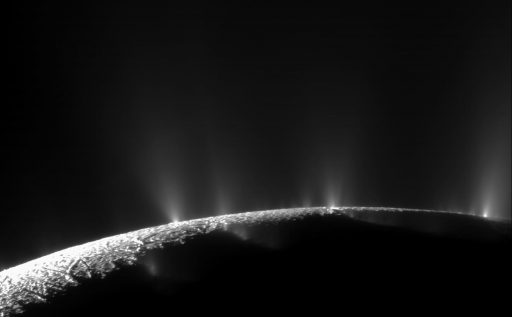
Cassini began studying another foreign world in 2005 when it first passed by Enceladus which would turn out to be the mission’s most surprising target. A pair of close flybys showed Enceladus had a thin but significant atmosphere, mainly consisting of water. Cassini also observed water ice geysers erupting on the moon’s south pole, giving credibility to the theory that Enceladus is responsible for Saturn’s E-ring.
In 2008, Cassini made a daring flyby – passing just 50 Kilometers from the moon’s surface and directly flying through the plumes of the southern geysers, detecting water ice, carbon dioxide and different hydrocarbons. Further observations between 2009 and 2012 confirmed Enceladus has a large salt-water ocean beneath its surface – one of the stand-out findings of the Cassini mission.
The presence of a liquid ocean holding nutrients and organic molecules, as confirmed from the cryovolcano ejecta, along with escaping internal heat places Enceladus “among the most likely places in the Solar System to host microbial life.”
Turning its attention to the ringed planet itself, Cassini spent months studying Saturn’s rings via radio occultation experiments and used its instrument suite to examine the composition of Saturn’s atmosphere and magnetic environment. Saturn’s Hexagon – an Earth-sized cloud pattern around the planet’s north pole – was also a point of study with distinct color changes noted from a mostly blue to a golden and reddish color over the course of a five-year period, likely as the result of changing seasons on Saturn.
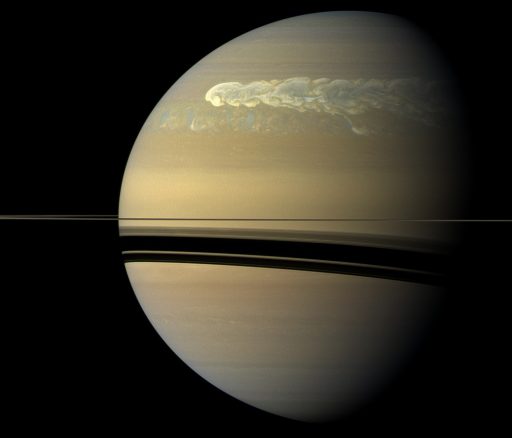
Cassini also watched the emergence of the Great White Spot, a northern hemisphere storm system that recurs roughly every 30 years and is the largest, hottest stratospheric vortex ever detected in the solar system, even eclipsing Jupiter’s Great Red Spot. Close-up studies of the storm showed a significant spike in ethylene gas, surpassing what was thought possible for Saturn by a factor of 100.
Cassini’s primary mission ended in 2008 and the craft headed into an initial mission extension of 27 months, called the Equinox Mission – comprising 60 additional orbits around the planet to study seasonal phenomena occurring around the Saturnian equinox. The Equinox Mission included 21 more Titan flybys and encounters with six other moons including Enceladus, Mimas and Tethys.
A second mission extension proposal through 2017 was approved in 2010 – named the Solstice Mission as it allowed Cassini to observe Saturn’s northern hemisphere summer solstice in May 2017, giving the entire Cassini mission an observation arc of half a Saturnian year, accompanying the planet for nearly half a lap around the sun. The Solstice Mission offered Cassini the opportunity for another 155 orbits, 54 additional Titan flybys and eleven more of Enceladus.
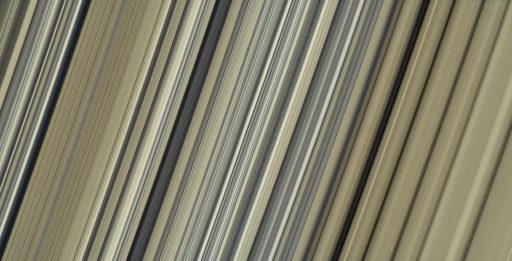
Cassini entered its final mission phase – dubbed The Grand Finale – in April 2017, setting out on a series of daring orbits between Saturn and its inner rings before being nudged onto a path to destruction.
Titan played an important role in setting up for Cassini’s finale, the mission’s 126th flyby on April 22 used the moon’s gravitational pull to alter Cassini’s orbit and set up for the planned 22 ring plane crossings, passing just 3,000 Kilometers above Saturn’s cloud tops and some 320 Kilometers from the inner ring edge.
Continuing collecting science through the end of the mission, Cassini mapped out Saturn’s magnetic and gravitational fields in great detail to reveal its internal structure. The close approaches to the rings were also used to assess how much material was being held in the ring system, reveal its origin and directly sample icy particles being funneled into Saturn’s atmosphere by its magnetic field. The distance to Saturn and the rings varied greatly for these last orbits, enabling Cassini to complete in-situ sampling of the D-ring on four occasions and the upper reaches of Saturn’s atmosphere via five dips.
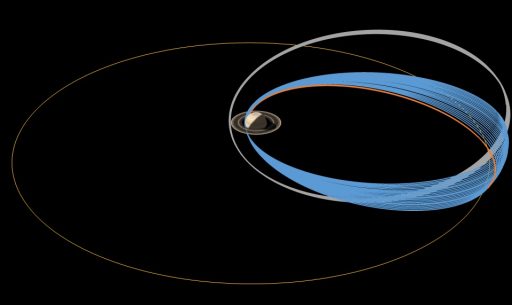
The end of Cassini’s mission was carefully planned out to safely dispose the spacecraft and avoid a dead probe lingering in the Saturn system where a collision with one of the potentially habitable moons could create biological contamination that would make future studies of extraterrestrial life impossible. Different end-of-mission scenarios like putting Cassini in a stable orbit around Titan, having it escape into the solar system or crashing it into one of Saturn’s icy moons were studied.
Disposal via Saturn entry was favored over other scenarios due to a fast implementation timeline, low technical risk and science offered by placing Cassini into ring-plane crossing orbits.
Cassini’s last encounter with Titan, although a distant one at 119,000 Kilometers, altered the craft’s orbit by reducing its low point by 1,800 Kilometers from a periapsis of only 1,200 km – setting up a fatal dive aiming for the dayside of the planet some 10 degrees above the equator. The September 11 maneuver, affectionately called ‘the kiss good bye,’ marked the start of Cassini’s final days – beginning with a downlink of the last data set from Titan, taking the mission’s last images on Thursday, playing back all recorded data from the vehicle and reconfiguring for real time data relay, allowing Cassini to collect and transmit science data through the very end.
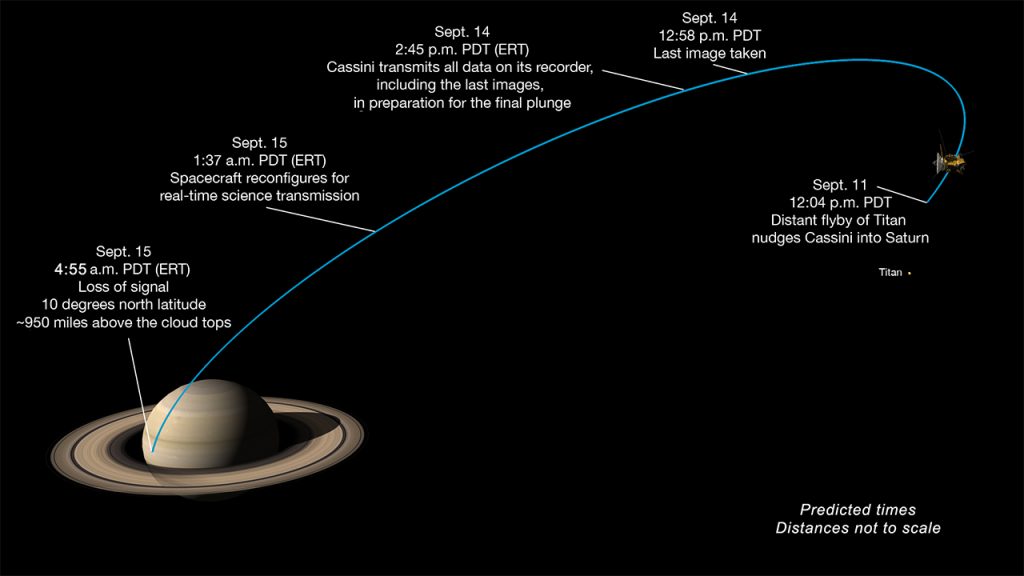
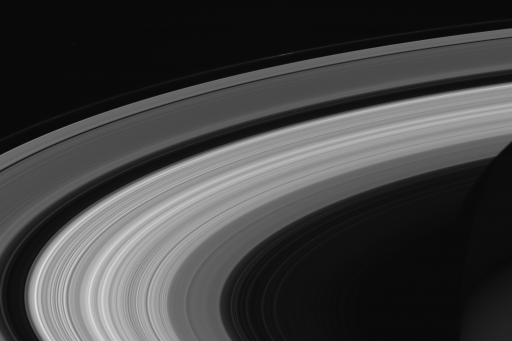
NASA’s Deep Space Network was continuously listening to Cassini from 3:15 UTC on Friday, with the Canberra, Australia station in a prime role for Cassini’s finale. At 7:14 UTC, Cassini was programmed to enter a five-minute roll maneuver to aim its Ion and Neutral Mass Spectrometer toward Saturn’s atmosphere to collect in-situ data on atmospheric composition as it arced into layers it did not dare traverse before.
Sending data at 27 kilo-bits per second, Cassini was expected to reach the discernible Saturnian atmosphere at 10:31 UTC (spacecraft time), marking the point of Entry Interface at an altitude of 1,900 Kilometers where atmospheric pressure is equivalent to sea level on Earth. Temperatures and stress acting on the falling probe increased significantly over the next minute with Cassini firing its thrusters to keep its antenna pointed toward Earth.
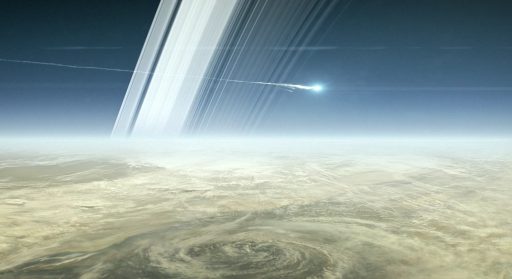
The stress of atmospheric entry was expected to overwhelm Cassini’s thrusters at an altitude of 1,600 km above the cloud tops, around one minute after the onset of entry with the craft fully burning up in the dense layers of Saturn’s atmosphere within another minute as temperatures exceeded the melting point of aluminum and iridium components on the spacecraft.
The last radio waves sent toward Earth by Cassini traversed through the vast expanse of the solar system for 83 minutes before reaching Earth at 11:55 UTC with X-Band signals vanishing first before a final blip of data coming via S-Band – confirming the spacecraft had met its end after outlasting its original mission by a decade, teaching humanity more than this generation will ever know about Saturn and showing worlds apart from our own where life is a distinct possibility.
“The mission has exceeded all expectations,” said Curt Niebur, Cassini program scientist during a teleconference leading up to the mission’s finale. “We’ve been shocked by things we never expected. We’ve seen one of the truly weirdest features of the solar system – a hexagonal structure the size of Earth that’s been at Saturn’s north pole for decades. We’ve learned that Enceladus has all of the ingredients needed to support life right now.”

